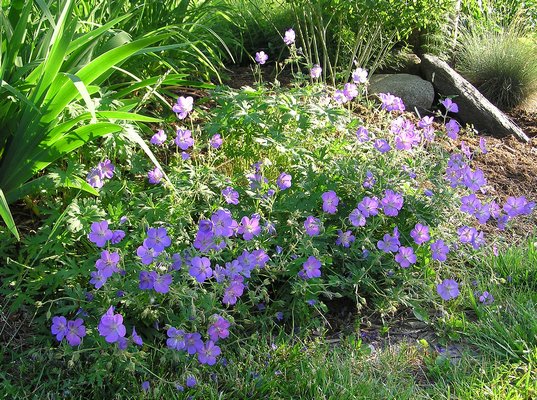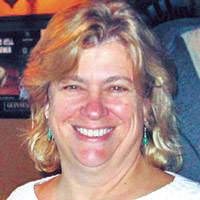

Put away the party hats. Turns out the rusty-patched bumblebee hasn’t quite made it onto the endangered species list yet after all. Per my last column, this once-common bumble became the first bee in the continental United States to be listed under the Endangered Species Act, a status that was to become official on February 10.
That was great news for all kinds of pollinators—other bees, butterflies, birds—because protections extended for Rusty would likely benefit them all.
But on Feb. 9, the U.S. Fish and Wildlife Service mumbled an announcement that the designation is on hold for 60 days while the administration reviews all new regulations.
Five days later, the National Resources Defense Council (NRDC) sued the Trump administration. Rebecca Riley, NRDC senior attorney, said “the Trump administration broke the law by blocking the rusty-patched bumblebee from the endangered species list. The science is clear—this species is headed toward extinction, and soon. There is no legitimate reason to delay federal protections for this bee. Freezing protections for the rusty patched bumblebee without public notice and comment flies in the face of the democratic process.”
And so it goes in this era of endless political fighting over everything. There’s nothing I can do for Rusty directly at the moment, but our little North Sea beekeeping contingent has launched an all-out assault on environmental threats in the best way we know how—by creating strategic pockets of wildflowers wherever we can. That’s not as easy as it sounds when virtually the entire yard is shaded nearly all day in the summer.
Undeterred, Patrick dove headfirst into the depths of the interwebs, emerging some hours later with a list of plants that are promised to repel deer, tolerate shade and produce extravagant bouquets of bee-dazzling flowers.
Took me a few hours wandering through websites of companies with names like, “Wildflowers nobody has ever heard of,” and “Overpriced plants that won’t bloom for three years,” but I finally got everything ordered, added some things I couldn’t resist, including a nice lavender variety for the small patch of sun we do have, and something called shooting star, which promises bursts of hot pink and yellow flowers, even in full shade. We shall see.
Long-suffering readers will remember that our bees have not exactly drowned us in honey these past three years. It’s hard to say exactly why they’ve been slow out of the starting gate—unless it’s got something to do with us being terrible beekeepers—but we’re thinking this isn’t a rich enough area for foraging, something we’re trying to fix.
Bees will forage as far as five miles away from their hive if necessary. That’s an enormous range—more than 78 square miles. When we got into this, we figured they’d be able to find plenty to eat. But it’s not really in anybody’s best interest for bees to have to travel that far to find flowers. Each honeybee worker spends about the last two weeks of her life out foraging, and can cover about 500 miles before her exhausted little body gives up the ghost. If she’s got to travel 10 miles for each pollen pocket she fills, she’s expending a lot more time and energy than another bee that can fill hers within a few dozen feet of the hive. She’s also making far fewer trips every day, so she’s bringing in only a fraction of what she could be harvesting.
We live across the street from Peconic Bay, so half of our girls’ potential foraging radius is under water. As for the other half, a lot of that is woods. Our girls are traveling serious distance to find flowers, and their output reflects that.
Two options—move the hives or provide more forage. We are going to try both. Right now, it looks like both hives wintered over just fine, much to my amazement. We’re going to keep those two in our yard, and surround them with as many blooming plants as we can manage.
We’re also going to add a couple of more hives, but locate them in the yards of willing friends, closer to more high-density flower locations. Because we are going to get some honey out of the girls this year or die trying.
For our shady, deer-infested yard, we’re planting Jacob’s ladder, cranesbill geraniums, penstemon, columbine, astilbe and lily of the valley. These are all perennials, so it’s basically a one-time investment. Since they’re wildflowers, and suited to this area, they should be very low-maintenance once they’re established.
We’re also adding white Dutch clover seed to our lawn—an idea that will make many lawn fanatics grow pasty with anxiety. But prior to about 1950, a healthy lawn was defined as one that had a nice mix of green grass and white clover. Clover seed was a component in bags of grass seed. Besides being a food source for pollinators, clover also fixes nitrogen in the soil, so the grass doesn’t require as much fertilizer to stay green and healthy.
When World War II ended, chemical companies were left with piles of herbicides to get rid of. They could sell them to homeowners to kill weeds, but the chemicals would also kill the beneficial clover. The solution? Marketing. Pretty soon a “healthy” lawn was one with nothing but green grass as far as the eye could see, and clover was on the enemies list. A wonderful day for advertising, not so much for lawns, bees or the environment.
So bee brave! Buck the status quo and scatter some clover seed in your lawn. Your grass will be happier, Rusty and his friends will be happier, you’ll spend less greening up the estate, and fewer chemicals will find their way into the groundwater. Hard to beat a four-way-win like that.
 More Posts from Lisa Daffy
More Posts from Lisa Daffy